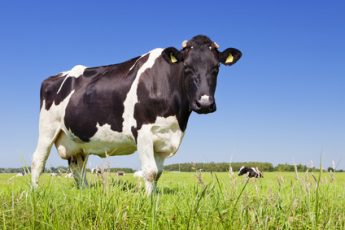Did you know that even if your beef is supposedly ‘Grass fed,’ it may have spent the last few months of its life eating nothing but grain, the same as a completely standard piece of meat?
I certainly didn’t, which is why when I heard about it, I had to look into it further.
That’s where I first heard the term ‘grass finished.’ What is grass fed vs grass finished beef, and what’s the difference?
What is grass fed beef?
Quick Navigation
The majority of low quality beef today is fed on grain after several months at pasture because grain is high in caloric content and low in cost, which leads to fatter cows for less cost and more profit.
But cows evolved primarily to eat grass, and feeding them grain, especially the cheaper, soy or corn based grain feeds that cows are fed in concentrated animal feeding operations to fatten them up quickly for quick slaughter and quick sale.
But grass-fed beef comes from cows which are left to pasture for the vast majority of their lives, eating grass for far longer.
So what’s grass finished beef?
Apparently, even grass fed beef can be taken off pasture and fed grain for the last few months of its life.
Grass finished beef on the other hand, is guaranteed to be left on pasture, eating grass, for its entire life, with no force feeding, no growth hormones. Just grass. The way it’s supposed to be.
Grass fed beef benefits
There’s been loads of studies on what grass fed beef benefits might actually be.
In general, grass fed beef has far less fat composition than grain fed beef, and also tends to have less calories, gram for gram.
The major difference, however, is in the fatty acid composition.
Compared to grain fed beef, grass fed beef has:
- Less saturated and monounsaturated fats.
- Similar amounts of Omega 6 polyunsaturated fats.
- As much as 5 times the amount of Omega 3s.
- Around twice as much CLA, or conjugated linoleic acid, which is linked to reduced body fat.
What are the benefits of grass finished beef?
Compared to grass fed beef, the benefits of grass finished beef are even higher. They include:
- 15 milligrams more Omega 3 per 3 ounce serving.
- Two and a half times as much vitamin E per serving.
- More CLA than grass fed beef.
What about the flavor?
The difference in nutritional composition actually makes a significant difference when it comes to the taste of the meat, as well.
Blind taste tests have found that meat from grass fed cows has been described with a range of less favorable terms, including; gamey, bitter, liverish and sour.
On top of this, because grass fed cows spend their days moving around as they graze, they tend to have more defined and tough muscle tone, which can cause the meat’s texture to be slightly chewier than you might be used to.
This is an undeniable truth of grass fed beef, and one even the farmers who produce it admit to, specifically admitting that grass fed beef can be a difficult change for people who are used to grain fed beef, both because of the difference in flavors, and the difference in texture.
But that’s not to say that you and your family might not love the difference in flavor. And with specific preparation, like marinating in breathed wine, which is also recommended by the farmers who produce it, a piece of grass fed beef can deliver the same delicious experience that you’re expecting.
Are there any other reasons to go grass fed?
There are, and they’re good reasons, too.
First off, grass fed beef is far more environmentally friendly, both because of the pollution aspect of the cow’s waste in feed lots, and the difference in cost profile that comes from transporting the huge amounts of daily feed a feed lot requires.
The second is the humanitarian aspect. Modern, factory farmed meat is increasingly seen as cruel and inhumane, with more people choosing free range meat and eggs. To a lot of people, it provides a certain feel good factor to know that what you are eating was produced with the minimum of harm and suffering.
Which One Should It Be?
Given the choice, I would. Whilst the difference in flavor can put people off, after you’ve had it once and know what to expect, grass fed beef is a much better choice. It might be more expensive, but it’s completely worth the cost. Now that you know the difference between grass fed vs grass finished beef, which do you feel like having?
Smoked, pan-seared on steel, copper, or ceramic, choose whichever way to prepare the best type of beef that you want to try.

